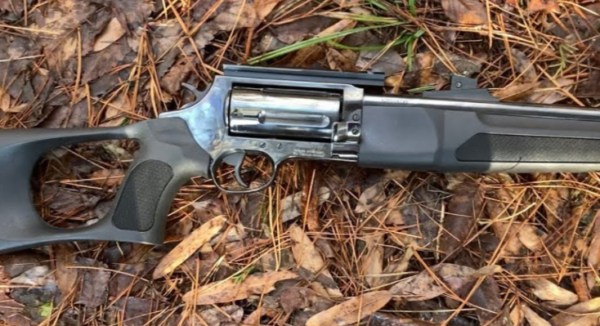The Beretta 1301 is a popular choice among firearms enthusiasts for its design, versatility, and reliability. However, like any other mechanical device, it’s not immune to issues.
This article aims to shed light on some common problems experienced by owners of the Beretta 1301, along with feasible solutions.

By addressing these potential hiccups, we aim to ensure your experience with the Beretta 1301 is as smooth as possible, whether you’re a seasoned shooter or a novice to the field.
12 Common Beretta 1301 Problems
The Beretta 1301, while generally reliable, can sometimes exhibit issues with its gas operating system.
This can lead to inconsistent cycling, particularly with lower power ammunition. Additionally, some users report a slightly aggressive recoil impulse, which may take time to adapt to.
It’s always recommended to follow regular maintenance and cleaning to enhance the shotgun’s overall performance.
1 . Ejection Failure


Cause
The primary cause for ejection failure in the Beretta 1301 is often the result of a dirty or improperly lubricated gun.
Over time, shooting residues can accumulate in the ejection port and interfere with the smooth operation of the ejection mechanism.
This is particularly common when the firearm is used extensively without regular cleaning or if low-quality ammunition is used.
Solution
To resolve ejection failure, ensure to regularly clean and lubricate your Beretta 1301.
Pay particular attention to the ejection port and mechanism. Use a brush or cleaning rod to remove any stubborn deposits.
After cleaning, lubricate the ejection mechanism with a high-quality gun oil.
Also, consider using only high-quality ammunition as low-quality ones often leave more residues. Remember, regular maintenance is key to preventing most firearm problems.
2 . Jamming Issues
Cause
The common cause of jamming issues in the Beretta 1301 typically lies in the use of incompatible ammunition or a worn-out recoil spring.
Incompatibility of ammunition may be due to the size, brand, or load of the shotgun shell.
In some cases, using shells that are too light for the recoil mechanism to cycle correctly can lead to jamming.
On the other hand, a worn-out recoil spring may lose its elasticity over time and cause jamming by failing to push the bolt back effectively.
Solution
To fix jamming problems, first and foremost, ensure you are using the right type and size of ammunition that your Beretta 1301 is designed to handle.
Look into the manufacturer’s specifications for guidance. Regularly inspect and replace your recoil spring if necessary.
If the spring has lost its elasticity, it will not perform effectively and may result in jamming issues.
3 . Bolt Assembly Difficulties
Cause
Rapid fire inconsistency is a common problem with the Beretta 1301 and can be caused by multiple factors.
One possible cause is unsteady or inconsistent grip on the firearm.
This can result in inconsistent pressure on the trigger and thus, inconsistent fire.
Solution
Proper firearm handling techniques can greatly reduce the issue of rapid-fire inconsistency. Practice maintaining a steady grip and consistent trigger pressure when firing.
4 . Rapid Fire Inconsistency
Cause
Rapid fire inconsistency with the Beretta 1301 is often attributed to inadequate lubrication of the firearm’s components.
Just like any other mechanical tool, a firearm requires proper lubrication to function efficiently.
When the moving parts of the firearm are not well-lubricated, friction increases, which can lead to irregularities in firing.
Solution
To address the issue of rapid-fire inconsistency, regularly lubricate your Beretta 1301 with high-quality gun oil.
This reduces friction among the moving parts and ensures smooth, consistent operation.
Additionally, practicing a steady grip and maintaining consistent pressure when firing can significantly improve the consistency of rapid fire.
5 . Trigger Tightness
Cause
Trigger tightness in the Beretta 1301 is often a result of improper maintenance and lubrication.
Over time, grime and residues can accumulate in the trigger assembly, increasing the friction between moving parts and causing a tight or stiff trigger pull.
Another possible cause is the use of a heavy trigger spring that requires more force to compress, thereby resulting in a tighter trigger.
Solution
To alleviate trigger tightness, it’s critical to regularly clean and lubricate the trigger assembly.
This will help to reduce friction and provide smoother operation. If the issue persists, consider inspecting the trigger spring.
It might be necessary to replace a heavy spring with a lighter one to achieve a more comfortable trigger pull.
6 . Magazine Loading Problems
Cause
Magazine loading problems in the Beretta 1301 often stem from improper handling or loading techniques.
Failing to properly align the ammunition within the magazine can hinder smooth loading and operation.
Moreover, overloading the magazine can put undue stress on the magazine spring, impairing its function and leading to loading issues.
Solution
To rectify magazine loading problems, it’s essential to practice proper loading techniques. Ensure that the shells are correctly aligned within the magazine for smooth operation.
Avoid overloading the magazine; adhering to the manufacturer’s recommended capacity will help maintain the integrity of the magazine spring.
Finally, inspect your ammunition before loading it into the magazine.
7 . Recoil Spring Issues
Cause
Issues with the recoil spring in the Beretta 1301 typically arise from prolonged use or lack of maintenance.
A recoil spring plays a crucial role in absorbing the recoil force and returning the bolt to its original position after firing.
Over time, the spring’s tension can decrease, leading to slower cycling or failure to feed new rounds.
Solution
To resolve recoil spring issues, regular inspection and replacement when necessary is vital. If the spring’s tension has noticeably decreased, it’s time to replace it.
In addition, maintaining cleanliness is key; remove any debris that may have collected in the spring and apply a light coating of oil to prevent rust.
8 . Stock Fit Discomfort
Cause
Discomfort with the stock fit of the Beretta 1301 often arises from improper adjustment or mismatched stock size.
The stock is the part of the firearm that the shooter braces against their shoulder; if it doesn’t fit well, shooting can become uncomfortable, impacting accuracy and performance.
Solution
To alleviate stock fit discomfort, proper adjustment and fitting are crucial.
Consider consulting a firearms professional for advice on selecting and fitting a stock that matches your body type and shooting style.
Moreover, investing in a recoil pad can help absorb some of the recoil, making shooting more comfortable.
9 . Gas System Malfunctions
Cause
Gas system malfunctions in the Beretta 1301 generally result from improper cleaning or maintenance of the gas system.
This component plays a pivotal role in semi-automatic shotguns, using the energy of fired shells to cycle the action.
If it’s not cleaned regularly, carbon buildup and debris can obstruct the gas ports, hindering proper cycling and leading to malfunctions.
Solution
To address gas system malfunctions, it’s fundamental to regularly clean and maintain the gas system.
Utilize a suitable cleaning solvent to remove carbon buildup and debris from the gas ports; this maintains optimal gas flow and ensures smooth cycling.
If the issue persists, consider inspecting and replacing worn-out components of the gas system.
10 . Extractor Problems
Cause
Extractor problems in the Beretta 1301 commonly stem from prolonged use or insufficient cleaning.
The extractor, responsible for removing spent shells from the chamber, plays a critical role in the firearm’s operation.
Over time, the extractor can wear down, leading to problems with the ejection of spent shells.
Particularly, the buildup of debris or residues can also impair the extractor’s function, causing misfires or jamming.
Solution
Addressing extractor problems involves regular cleaning and timely replacement.
It’s important to clean the extractor thoroughly, ensuring it’s free of any debris or residues that could hinder its operation.
If issues persist despite cleaning, examine the condition of the extractor. Should wear and tear be evident, replacing the extractor is advised.
11 . Sight Adjustment Difficulty
Cause
Difficulties with sight adjustment on the Beretta 1301 often occur due to improper alignment or lack of understanding about sight mechanics.
The sight system on this firearm is crucial for achieving accurate aim and precision in shooting.
If sights are not properly aligned, it can lead to inaccurate shooting and poor performance.
Solution
Resolving sight adjustment difficulties involves education, practice, and possible professional assistance.
Gaining a thorough understanding of sight mechanics is key, which may involve studying the firearm’s manual or seeking educational resources online.
Practicing sight adjustment in various shooting conditions can also improve proficiency.
If difficulties persist, consulting a firearms professional could be beneficial.
They can guide proper sight alignment and adjustment techniques.
12 . Barrel Heating Issues
Cause
Barrel heating issues in the Beretta 1301 commonly arise due to excessive rapid firing.
The heat generated from firing rounds in quick succession can cause the barrel to heat excessively, potentially leading to a decrease in accuracy and even causing discomfort if the barrel is touched.
Over time, this can also result in wear and tear on the barrel, impacting the overall performance and longevity of the firearm.
Solution
Addressing barrel heating issues primarily involves proper fire rate management and using quality ammunition.
By avoiding excessive rapid firing, the barrel is given time to cool, preventing unnecessary heat buildup.
Additionally, using ammo that produces less heat upon firing can help manage barrel temperature.
If you frequently encounter barrel heating, consider investing in a heat shield or a barrel cooler.
These accessories can help dissipate heat more efficiently, preserving the condition of the barrel and enhancing your shooting experience.
Conclusion
In conclusion, while the Beretta 1301 is a reliable and robust firearm, it’s not without its potential issues.
From stock fit discomfort to barrel heating problems, users may face a variety of challenges.
However, with regular maintenance, proper understanding, and timely component replacements, many of these problems can be mitigated or completely avoided.
Remember that learning and understanding your firearm not only enhances your shooting performance but also ensures a safer and more enjoyable shooting experience.
Good firearm stewardship involves continuous learning, appropriate care, and a commitment to safety.
FAQs
Is the Beretta 1301 reliable?
Yes, the Beretta 1301 is renowned for its reliability and robust performance in various environmental conditions.
Which is better Beretta 1301 vs Benelli M4?
Both are exceptional, though the Beretta 1301 is often praised for its lightness and faster cycling, while the Benelli M4 is recognized for its durability and military-grade design.
Is Beretta 1301 drop safe?
Yes, the Beretta 1301 is designed with a ‘drop safety’ mechanism that prevents accidental discharges if the firearm is dropped.
Beretta A400 Xtreme Plus Problems
Beretta A300 Outlander Problems


As the founder and owner of the domain “mygunsgeek.com”, I bring to the table a deep passion for firearms, combined with a strong commitment to sharing this knowledge with a wider audience. With years of experience exploring the inner workings of various firearms, from pistols to rifles, I have cultivated a vast expertise in this field. This has enabled me to create a platform that serves as a trusted resource for gun enthusiasts, providing comprehensive reviews, advice, and insights into the latest trends and advancements. I am dedicated to ensuring that my content is both informative and engaging, helping my readers make informed decisions about their firearm choices. For any inquiries or suggestions, feel free to reach out to me at wwwfffwww117@gmail.com. Your feedback is invaluable in shaping the content and direction of mygunsgeek.com.


